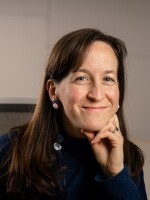As we approach 2017, smartphones and Wi-Fi networks may seem practically universal. But even now, there remains a digital divide—and many San Joaquin Valley residents find themselves on the side without internet access. A new community effort, though, is bridging that divide, in what may seem an unlikely place.
Nikolaus Namba is a school district administrator in the town of Lindsay. He used to be a teacher—the Grinch on his tie is a dead giveaway.
“I’m still living in a land of being a child at heart,” he laughs.

Now, Namba leads a program you may not see in most school districts: it’s called the Office of 21st Century Learning, and its mission is to enable to students to learn at any time of day or night. The office created an online learning portal for students, and it found the budget to give every student an iPad Mini or Google Chromebook. But despite these innovations, a few years ago, something unexpected was happening outside schools.
“We started noticing that really late at night, when we would leave, there would be kids sitting on our doorsteps, whether it was at the sites or here at the district office, and they were using our Wi-Fi,” says Namba.
They didn’t have internet access at home.
“That was the challenge that we were seeing,” he says. “We had all these kids across town that were wanting to either dig deeper or build something innovative in a different way or go faster, and they couldn’t do it without that access.”
So, four years ago, the school district launched an ambitious program: it began equipping every student’s home with Wi-Fi. At that time, Namba estimates less than half of Lindsay’s students had internet access. Now, they’re at 80 percent and counting. District officials hope being connected will drive students to finish more homework, score higher on standardized tests, and move ahead in more classes. Lindsay students are bucking the trend when it comes to who is on which side of the digital divide.
One student now on the connected side is Asusena Cisneros, a sophomore at Lindsay High School. She’s smiley and energetic, and a portrait of her in a blue sparkly gown hangs over her dining room table.

“Yeah, that’s me at my quinceanera,” she laughs. “My mom wanted to show everybody, so she made it huge and she just put it on the wall.”
Her favorite class is history and she wants to study business or marketing in college. She says she likes school. But a year ago, she was one of those kids Namba would see as he left work.
“Most of the time I would stay after school and I wouldn't get home until pretty late because I was trying to get caught up with all my work,” Cisneros says.
Sometimes her parents would drive her to places with free Wi-Fi like McDonald’s.
That all changed this past winter, when the school district outfitted her house with Wi-Fi. She can now do homework whenever she wants, get ahead in some classes, and even play sports.
“I don't have to stay after school and finish my work so I can go to tennis and then I can finish my work once I get home,” she says.
The Cisneros home is at the center of a Wi-Fi cluster. A receiver on her roof transmits the network to them and a handful of their neighbors, all with modems inside their homes. Houses in more rural areas got devices that plug into walls to create wireless hotspots. Only students and their family members can log in.

District officials estimate getting the program off the ground cost $300,000 to 400,000, and maintaining it will require about $75,000 a year.
The digital divide is everywhere, but it’s especially pronounced in this area. According to a 2013 report from the White House, less than two-thirds of Tulare County residents have adopted the internet—lower than any other California county. It’s no coincidence that, by some measures, it’s also the poorest county in the state. The Pew Research Center has shown that a lack of internet access is associated with poverty and rural living, and it’s more common among immigrants and Latinos—all of which are concentrated in Lindsay.
Karen Cator of Digital Promise, a non-profit created by Congress to improve education through technology, and she says Lindsay is exactly where projects like this should happen.
“I think that doing this kind of thing in a low-income community in a place where opportunities don't necessarily abound is fantastic,” she says. “If not in Lindsay, we are missing a very important part of the population.”
And, she says, navigating the good and the bad of the internet is something students should be taught. It’s what she calls digital citizenship.

“The internet is here, it's here to stay, it probably is not going anywhere, and so we need to make sure that students and teachers know how to use it wisely, how to use it safely,” she says. “School is the place to learn those kinds of things.”
Time will tell if students are truly benefitting from their new internet freedom. Cator suggests schools should see more engagement in class, and students that feel more prepared for jobs and college.
Nikolaus Namba, though, will be happy when he sees students working from home and taking on other school activities like tennis.






